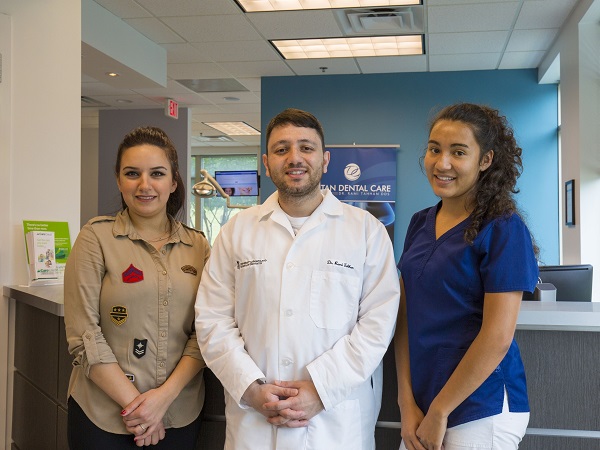Dental Implants: A Solution for a Damaged Crown

A damaged dental crown can lead to serious complications, but dental implants can be a helpful solution. Dental crowns are typically used to restore a tooth that is in bad shape due to tooth decay or an injury. However, even a dental crown can become damaged later. When damage does occur, a general dentist often recommends dental implants to renew the tooth and replace the restoration.
Dental implants to replace a damaged dental crown
Being aware of how dental implants work as a solution for damaged crowns can be helpful to those exploring their options. Read on to find out more about these popular dental restorations!
Dental implants
Dental implants are small, screw-shaped rods that act as a replacement tooth root. They are typically made of titanium materials, which is a biocompatible metal that the body rarely rejects. Dental implants are placed directly into the jawbone during a surgical procedure. After placement, they undergo a process called osseointegration, which allows for natural fusing to take place.
A solution for a damaged dental crown
Dental crowns can become easily damaged through injuries to the mouth, wear and tear or accidents like a crack or a chip. Sometimes, a general dentist can repair the dental crown through a process of bonding or adhesive placement. However, there are times when the general dentist recommends a different route for restoring the crown. Instead of restoring the actual crown, the general dentist may recommend dental implants. Outlined below are a few reasons that dental implants may be recommended to replace a damaged dental crown.
- Dental implants are long-lasting
- There is stimulation of bone growth within the jaw
- Strength and durability comes with dental implants
- There are versatile artificial tooth options
If the patient chooses dental implants as a solution to a damaged crown, the general dentist will likely refer out to an oral surgeon who will perform the actual procedure. The procedure will work the same way that traditional dental implants are placed, except the oral surgeon will remove the tooth with the damaged crown on it first. In some scenarios, it may be recommended to do the procedure in two parts; however, it is often more efficient to have the tooth removed right before the dental implant is placed.
How it works
Dental implants work by fusing with the natural bone. Once fused, they help stimulate bone growth, which is often lost when teeth fall out or are removed. General dentists typically recommend dental implants as a replacement option because they last forever, with good oral hygiene. Unlike other tooth replacement options, dental implants become apart of the body, which allows for good oral health, while also acting as a strong support system for the artificial tooth.
Learn more today!
Want to find out more about dental implants and how they can be used as a solution for damaged crowns? Working with a general dentist is a great place to start. Reach out today to get started or to learn more!
Request an appointment here: https://www.titandentalcare.com or call Titan Dental Care at (703) 745-3227 for an appointment in our Sterling office.
Check out what others are saying about our services on Yelp: Read our Yelp reviews.
Related Posts
It is important to adjust dentures when they cause concerns to help ensure the issues are resolved and to avoid more severe concerns and the need for denture replacement. Denture adjustments may be necessary when your dentures do not fit properly, experience minor damage, or are outdated and worn down.A denture adjustment involves minor improvements…
tooth fillings offer a simple approach with little to no pain. This dental restoration treatment has long been the standard for restoring and rebuilding teeth damaged by cavities, injury, or minor imperfections such as chips or cracks. When considering different dental restoration options, it is a good idea to get familiar with how each procedure…
An in-office professional dental cleaning is a crucial aspect of maintaining good oral health. While oral hygiene done at home is a great way to keep the teeth and gums healthy, it is important to see a general dentist on a regular basis for cleanings and examinations. Dental cleanings are simple, easy, and relatively painless,…
Choosing a general dentist to straighten your teeth is a great idea. General dentists are primary care dental providers, which means they understand everything there is to know about diagnosing, treating, and managing their patients' oral health. This type of dentist is the first dentist you would make an appointment with when experiencing any dental…


